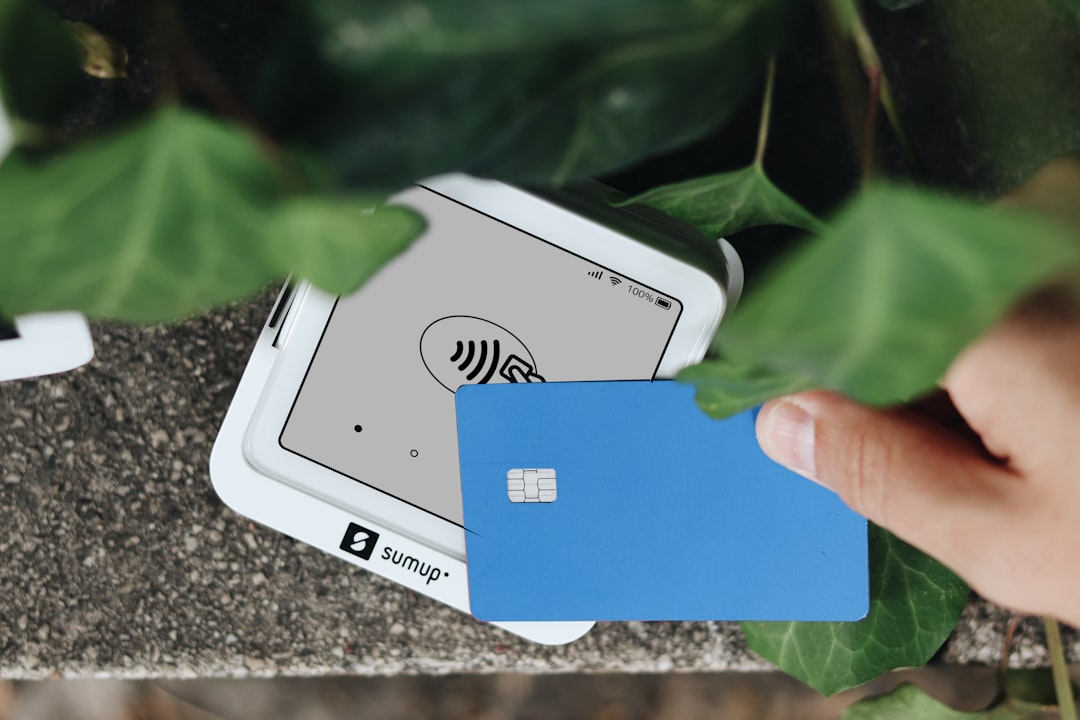Shopify Markets: EU, UK, ANZ Localization That Converts
Go global with Shopify Markets. Learn localization, multi-currency pricing, and logistics for EU, UK, ANZ with case studies and a launch checklist. Start now.

Narayan Chaudhary
Narayan Chaudhary
June 7, 2025

Going Global with Shopify Markets: Localization, Multi-Currency Pricing, and Logistics That Convert in the EU/UK/ANZ (Real Seller Case Studies + Launch Checklist)
If 30 percent of your traffic is already international, you are leaving money on the table if your checkout still speaks only one language and one currency. According to Shopify’s own data in their overview of international sales tools, an average of 30 percent of store visitors are international and showing prices in a shopper’s local currency can lift conversion up to 40 percent, while translating your store correlates with a 13 percent relative conversion increase and local payment methods like Bancontact can add 150 basis points with Belgian buyers (Shopify’s international sales tools article). For Byte & Buy members, that is the definition of a near term win: convert the demand you already have.
This guide is a hands-on playbook for turning on global growth with Shopify Markets in the EU, UK, and ANZ. We will cover how to localize at the right depth, price in multiple currencies without margin surprises, and engineer logistics that reduce refusals and chargebacks. You will see anonymized case studies from Byte & Buy member stores, plus a launch checklist you can run in a weekend. If you want the full, gated SOPs that our members use, you can explore membership on Byte & Buy or upgrade for unlimited access at Upgrade.

What Shopify Markets Actually Solves
Markets centralizes international settings inside your Shopify admin so you can segment countries into markets, present localized domains, sell in 130+ currencies, offer local payment methods, translate content, and collect duties and import taxes at checkout. The key point is speed to a market ready experience without maintaining separate stores.
Local currency pricing is integrated with Shopify Payments and supports rounding rules so endings look native.
Localized domains are handled using market subfolders or subdomains, with hreflang and SEO tags automatically set, and geolocation prompts where auto redirect is not permitted in the EU (Shopify’s domain guidance).
Duties and import taxes can be calculated and collected at checkout, giving total landed cost upfront, which Shopify highlights as a driver of fewer refusals and better buyer experience in their article on duties and import taxes at checkout and in the Help Center overview.
If you want a turnkey approach where Shopify and Global-e become merchant of record for cross border, Managed Markets handles tax registrations, local payment methods, duty guarantees, and DDP shipping options, with fraud screening and chargeback protection built in. The Managed Markets help doc explains that it covers local regulations, taxes, duties, and supports local payment methods such as Klarna, iDEAL, Bancontact and Sofort with guaranteed duty amounts at checkout.
If you do not have a Shopify store yet or want to test Markets on a new storefront, you can start with Shopify.
Localization That Actually Converts in the EU, UK, and ANZ
Localization is more than translation. It is the set of expectations your buyers have before, during, and after checkout. The conversion lift comes from removing points of hesitation.
Language and content
A global consumer study cited by Shopify shows that 65 percent prefer content in their language and 40 percent will not buy if they cannot read the site (Shopify’s international sales tools). Use Shopify’s free Translate & Adapt for auto translation and then hand edit hero sections, shipping and returns, and product benefit copy in your top markets. Our members often prioritize FR, DE, NL, and ES for the EU, then EN-GB for the UK and EN-AU for Australia.
Use region specific spelling and terms. Adapt color to colour, cart to basket in the UK, and centimeters to millimeters where appropriate. The Translate & Adapt app supports market specific content adaptations, which Shopify outlines in the same article.
Do not automatically redirect users in the EU without consent. The EU Geo blocking Regulation prohibits redirecting to a country site version without explicit consent, as stated in Regulation (EU) 2018/302. Use Shopify’s Geolocation prompt instead.
Domain structure and SEO
According to Shopify’s guidance, Markets can automatically create market subfolders like example.com/en-gb and set hreflang. This is the fastest way to signal relevance to search engines without a complex domain migration (international domains details in Shopify’s article). Keep market pages discoverable in your top nav or a country selector so shoppers can choose their location.
Local currency and price psychology
Avoid odd endings caused by FX fluctuations. Shopify supports rounding rules so prices stay stable with common currency denominations, and you can apply percentage price adjustments by market to offset shipping, VAT, or returns costs. For hero SKUs or price anchored categories, set fixed prices by country to control exact price points.
Local payment methods by country
Payment preference is often the difference between a sale and an abandoned checkout. iDEAL accounts for about 70 percent of online payments in the Netherlands according to Stripe’s iDEAL guide. Shopify Payments and Managed Markets support local methods across Europe including Bancontact for Belgium, Sofort and Klarna in Germany, and PayPal throughout Europe, which the Managed Markets overview lists with coverage.
In practice, enable the top two or three local methods for each market. The same Shopify article on international tools notes that adding Bancontact drove a 150 basis points conversion lift in Belgium.
Delivery and returns expectations
DHL’s 2024 shopper report highlights that 41 percent of global shoppers and 44 percent of social shoppers will only buy if free returns are available, while tracking and clear transit times rank among the top trust factors (DHL’s Delivery and Returns Report summary). For EU markets, post to a local returns address if possible or offer prepaid return labels with QR code drop off. In the UK, the same preference holds and locker returns have gained traction.

Pricing and Taxes Without Guesswork
International pricing is a balancing act. You need local currency clarity, VAT inclusive pricing where required, and margin protection.
Tax inclusive prices by market
Shopify allows dynamic tax inclusive pricing in regions where shoppers expect VAT included in the shelf price, namely the EU, UK, Australia, and New Zealand among others. The Help Center article on duty and tax inclusive pricing explains that you can automatically include taxes in displayed prices for those markets. This is aligned with consumer norms and prevents sticker shock at checkout.
Duties, import taxes, and incoterms
The incoterm you choose defines the experience at the doorstep. The Shopify Help page on duties and import taxes explains the two most common:
Delivered duty paid means you, the seller, collect duties and taxes at checkout and your carrier delivers without asking customers to pay on arrival. This leads to clear total costs and fewer refusals.
Delivered at place means the carrier collects duties and taxes at delivery, often adding brokerage fees. Expect more refusals and slower deliveries when buyers are surprised.
Shopify supports buying DDP labels through select carriers including DHL Express and Canada Post when duties are collected at checkout, which is called out in the same Help article. Byte & Buy members that moved to DDP for EU and UK shipments report measurable drops in WISMO tickets and chargebacks.
Compliance basics by region
EU. For B2C low value consignments not exceeding 150 euros, the EU’s Import One Stop Shop was created to simplify VAT collection. The European Commission’s 2024 report notes IOSS usage and VAT declared through IOSS increased significantly in 2024, with VAT declared up 62 percent to 6.3 billion euros, indicating broader adoption and enforcement (EU 2024 report). The EU also guarantees a 14 day right of withdrawal for online purchases under consumer law, which is summarized in the EUR Lex consumer rights overview. Make sure your returns page states this clearly.
UK. For consignments at or below 135 pounds shipped to UK consumers, the seller generally collects VAT at checkout and remits to HMRC. Above 135 pounds, import VAT applies on entry to the UK. The rules are explained in HMRC’s guidance on overseas goods sold directly to customers in the UK. Keep your UK VAT registration and thresholds in mind.
Australia. Australia applies GST on low value imported goods with a customs value of 1,000 AUD or less for consumer imports, and non resident sellers above the registration threshold must register and collect GST. The Australian Taxation Office explains GST on low value imported goods and the 10 percent rate in their guidance and how GST works.
New Zealand. New Zealand requires overseas businesses to register and collect GST on low value imported goods sold to NZ consumers, generally up to NZD 1,000 per item. Inland Revenue sets out the rules in their low value imported goods page.
If you want to avoid registering in dozens of countries, Managed Markets acts as merchant of record via Global e and handles VAT and GST remittance, duty guarantees at checkout, and local payment methods, which is ideal for fast rollout in EU and ANZ.

Payments That Fit Local Habits
European buyers expect their preferred local rails. Shopify Payments and Managed Markets let you turn on these options per market so you remove unnecessary friction.
Netherlands. iDEAL is dominant, accounting for about 70 percent of online payments according to Stripe’s guide to iDEAL. Pair iDEAL with PayPal and credit cards.
Belgium. Bancontact is widely used and Shopify reports a meaningful lift for Belgian buyers when it is offered, as stated in the international sales tools article.
Germany and DACH. Sofort and Klarna are strong, along with PayPal and cards.
Nordics. Klarna and MobilePay are common, with cards and PayPal.
UK. Cards, PayPal, Apple Pay and Klarna are table stakes.
Australia and New Zealand. Cards and digital wallets remain common, with PayPal penetration high and local wallet adoption rising.
Enable at least one bank transfer option and one buy now pay later option per market where available. Shopify documents coverage by method in the Managed Markets local payment methods section.
Logistics That Prevent Surprises
Most cross border complaints are about speed, cost, and unexpected charges. Engineer the journey for total cost clarity and predictable delivery.
Use DDP for EU and UK where possible. The Shopify Help page on duties explains that DDP removes doorstep charges and helps avoid refusals. If you collect duties at checkout, Shopify supports buying DDP labels from carriers like DHL Express in the shipping label workflow.
Publish market specific delivery estimates. DHL’s 2024 shopper research highlights that clear transit times and tracking are essential, especially for higher value items, which 89 percent of shoppers expect to be trackable end to end (DHL report summary).
Offer a return method that matches local habits. European shoppers increasingly favor paperless QR returns at parcel lockers or stores, and many will only purchase if free returns are available, according to DHL’s returns findings in the same report. You can price this into a market specific adjustment using price adjustments.
Three Real Seller Case Studies from Byte & Buy Members
These anonymized snapshots are drawn from Byte & Buy member interviews and analytics screens. They show the order of operations, not just the outcome.
Case 1. EU Breakthrough With Currency, Language, and Bancontact
A mid market accessories brand started with a single English US storefront. After seeing that 28 to 35 percent of sessions were EU based, the team created an EU market in Shopify Markets with subfolders, turned on EUR pricing with rounding rules, translated only home, product, and checkout to DE, FR, and NL using Translate & Adapt, and enabled iDEAL, Bancontact, and Sofort. They also switched to DDP with duties collected at checkout for the EU. In the first 60 days, EU conversion rate rose double digits relative to the prior period, refunds fell modestly, and WISMO tickets decreased due to clear duties at checkout and better tracking. The biggest surprise was NL revenue share, attributed to iDEAL adoption which aligns with Stripe’s iDEAL dominance data.
Case 2. UK Confidence With VAT Inclusive Prices and Klarna
A beauty brand with strong TikTok traction in the UK moved to UK GBP pricing, turned on dynamic tax inclusive pricing for the UK as explained in Shopify’s tax inclusive pricing guide, added Klarna at checkout, and published a UK specific returns page with clear 14 day cooling off language. The change removed a confusing plus VAT note near checkout and cut late stage drop offs. They also aligned paid social CTAs with VAT included pricing. This removed uncertainty and brought the AOV up as Klarna adoption increased. HMRC’s 135 pound threshold guidance clarified their duty split on higher value orders.
Case 3. ANZ Speed With Localized Shipping and GST Clarity
A US apparel brand with fans in Australia and New Zealand created an APAC market, priced in AUD and NZD with a small price adjustment to absorb returns and local delivery surcharges, configured GST inclusive pricing, and published a short GST FAQ citing ATO’s GST rules and NZ Inland Revenue guidance. Switching to a carrier with strong last mile coverage and accurate ETA mapping removed most buyer friction. The brand saw a meaningful drop in failed deliveries and a healthier repeat purchase rate over the next quarter.
For more growth plays that compound global results, see our public primers on conversion rate optimization and quick win ideas in 10 proven tactics to boost your ecommerce conversion rates. Members can bookmark the private SOPs in Bookmarks.

Your Shopify Markets Setup, Step by Step
You can turn on a market ready experience in days. Use this pragmatic order of operations that we have refined with Byte & Buy members.
Map your first markets. Start with EU and UK as separate markets, then ANZ. Use Shopify’s Markets segmentation in Settings. Confirm country lists and default languages.
Localize the storefront. Turn on EUR, GBP, AUD, and NZD with rounding. Translate homepage, product templates, and checkout first using Translate & Adapt. Avoid overtranslating long tail content until you see traction.
Structure domains for SEO. Use subfolders per market and ensure hreflang is set. Add a country selector in the header or footer and a geolocation prompt, not an auto redirect in the EU due to the Geo blocking Regulation.
Price for margin, not just parity. Apply a small market wide price adjustment where shipping and returns costs are higher. Fix prices by country on hero SKUs to hit tested price points.
Turn on local payment methods. For EU, add iDEAL, Bancontact, Sofort, Klarna where available as listed in Shopify’s Managed Markets local methods. Keep PayPal and wallets active.
Choose your duty strategy. Prefer DDP for EU and UK. Activate duties and import tax collection at checkout using Shopify’s duties feature. Set up DDP labels via supported carriers per the Help Center.
Publish market specific policies. Create shipping and returns pages per market. Include EU 14 day withdrawal rights with a simple returns flow linked from the footer. Publish UK VAT inclusive pricing note and your UK VAT number where applicable. Add ANZ GST FAQs referencing ATO and Inland Revenue.
Test checkout per market. Place test orders with local payment methods and verify total landed costs, tax inclusive display, and tracking events. Confirm that email notifications reflect local currency.
Launch with market specific offers. Run localized creatives and CTAs. Consider country specific preorders to manage demand spikes, and reference our primer on preorders for execution details.
Track and iterate. Create a dashboard segmented by market for conversion rate, AOV, payment method adoption, WISMO tickets, and chargebacks. Adjust price and shipping offer until you hit target contribution margin.
If you want an even faster start and can live with a bundled fee structure, evaluate Managed Markets for merchant of record, tax remittance, duty guarantees, local methods, and chargeback protection. If you are new to Shopify, get started here: Start with Shopify.
EU, UK, and ANZ Logistics Playbook: The Details That Matter
EU. Collect VAT and duties at checkout. Consider using IOSS for sub 150 euro consignments, which the European Commission explains on the IOSS portal. Offer at least one free return option if your margin supports it, informed by DHL’s finding that free returns are often a purchase requirement (DHL shopper trends).
UK. Apply dynamic tax inclusive pricing and publish UK VAT information. Respect the 135 pound threshold rules for VAT collection as outlined by HMRC. Use DDP where possible to avoid doorstep surcharges.
Australia and New Zealand. Set GST inclusive pricing. Reference ATO’s GST rate and low value goods guidance and Inland Revenue’s rules. Offer home delivery and parcel shop returns, and make ETAs explicit given longer transit.
Tie your logistics promise back to your funnel. If you are investing in social selling to drive international traffic, then connect your creative to localized delivery and returns offers. For inspiration, see our public guides to shoppable video and using LinkedIn’s Social Selling Index to get B2B buyers into DTC funnels.
The Byte & Buy Launch Checklist
Use this condensed list to go live confidently. Members can access a printable version and the accompanying Figma file in the library, which pairs with our CRO playbooks on Byte & Buy.
Markets and domains
Create EU, UK, and ANZ markets in Settings.
Assign subfolders per market and enable geolocation prompt.
Localization
Enable EUR, GBP, AUD, and NZD with rounding.
Translate homepage, PDP, and checkout into DE, FR, NL, and EN GB.
Adapt copy for spelling and units by market.
Payments
Turn on iDEAL for NL, Bancontact for BE, Sofort and Klarna for DE, Klarna for UK, and PayPal where relevant.
Verify Apple Pay and Google Pay in each market.
Pricing and margin
Apply market level price adjustments where required.
Set fixed prices for hero SKUs.
Turn on dynamic tax inclusive pricing for EU, UK, and ANZ.
Duties and shipping
Activate duties and import tax collection at checkout.
Configure DDP labels with a supported carrier.
Publish market specific delivery estimates.
Legal and policies
EU 14 day right of withdrawal on returns page.
UK VAT details and 135 pound threshold note.
ANZ GST FAQ with references to ATO and Inland Revenue.
Testing and analytics
Place test orders with local payment methods.
Validate emails, invoices, and tracking in local currency.
Build market segmented dashboards and alerts.
If any step here needs a deeper dive, we have members only walkthroughs tied to this article. Sign in at Account or join us at Sign up. If you need help with access, use Sign in, Forgot password, or update credentials at Update password.
Common Pitfalls to Avoid
Auto redirecting EU users. This violates the EU Geo blocking Regulation unless you obtain consent. Use a prompt as Shopify recommends in their international domains section and as required by Regulation (EU) 2018/302.
Pricing parity everywhere. Costs vary by region. Use price adjustments and fixed prices where it matters.
DAP for low value orders. You will create refusals and fees. Prefer DDP and collect duties at checkout per Shopify’s duties guidance.
Ignoring local payment rails. The iDEAL and Bancontact examples from Stripe and Shopify show how strong these preferences are.
Finally, connect your global expansion to a broader conversion program. Our members learn from top performing sellers in short playbooks, not theory. If you want that edge, the invite is open at Upgrade. When you are ready to spin up or expand your store, you can start with Shopify and have your first markets live in days.